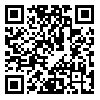Volume 4, Issue 4 (2013)
LRR 2013, 4(4): 87-109 |
Back to browse issues page
1- Associate Professor, Department of Linguistics, Bu-Ali Sina University, Hamadan, Iran
2- Ph.D. Student, Department of Linguistics, Bu-Ali Sina University, Hamadan, Iran
2- Ph.D. Student, Department of Linguistics, Bu-Ali Sina University, Hamadan, Iran
Abstract: (5951 Views)
The present paper focuses on the effects of discourse and pragmatic factors on the determination of case system in Hawrami. Du Bois (1987) argues that dominant case systems in any language cannot be thoroughly accounted for unless pragmatic factors are taken into consideration. He further shows that certain features of narrative discourse creates a special discourse tendency, called “Preferred Argument Structure”, whose defining characteristics are exactly the same as those of “Ergative systems”. The way this pragmatic tendency competes with other pragmatic factors, which exhibit accusative-like features, ultimately determines the case system in syntax. In this paper, it is first shown that, although preferred argument structure is observed in all syntactic constructions of Hawrami, its effect in aorist constructions is more prominent than in the present constructions, and this very fact causes the former set of constructions to become Ergative. Other competing pragmatic tendencies like topic animacy and topic continuity, unlike the preferred argument structure, always motivate the accusative case pattern in syntax. The effects of each of these two factors on determination of accusative case system in the present constructions are not the same; only topic animacy has the potential to set the ultimate case system in syntax as accusative. From a theoretical point of view, the empirical findings of this research may lend more support to those functionally-oriented theories of language, which consider the syntactic properties of languages as direct results of pragmatic considerations and communicative needs of speakers.
Published: 2013/12/22
| Rights and permissions | |
 |
This work is licensed under a Creative Commons Attribution-NonCommercial 4.0 International License. |

